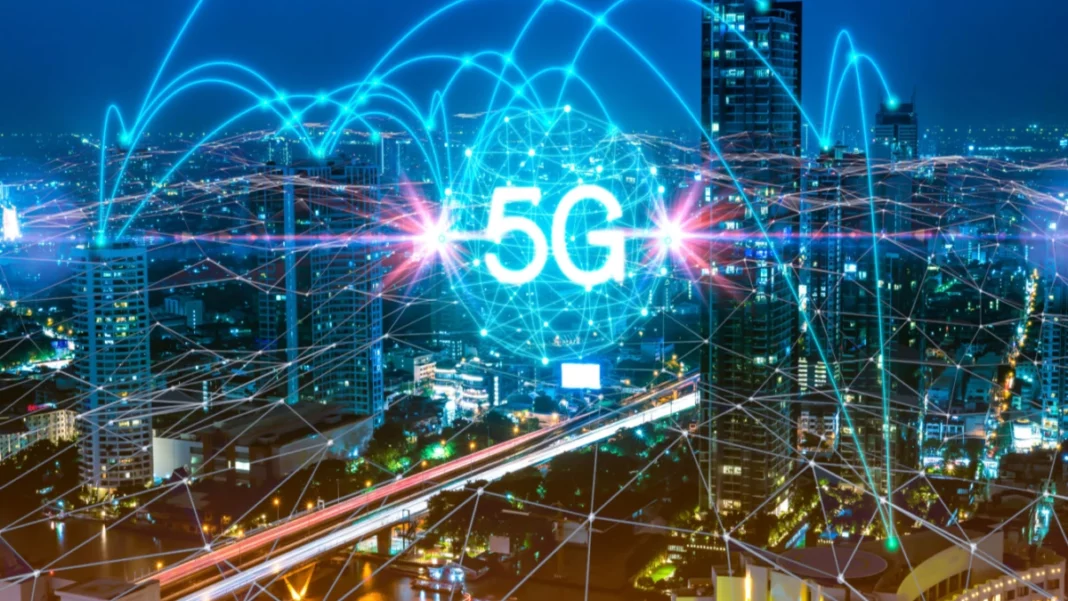Government and industry authorities reported that the first-ever 5G spectrum auctions in India ended on the seventh day of the sale, with the government earning a record-breaking Rs 1.5 lakh crore. The government has auctioned a 72 GHz spectrum with a 20-year expiration date. The value of the spectrum as a whole, at base pricing, is 4.3 trillion rupees. Final tallying is underway.
What is 5g Spectrum?
5G enables much higher mobile broadband speeds and lower latencies, adding a new level of network flexibility. By allowing the Internet of Things (IoT) and reshaping industry vertical sectors, it goes beyond simply satisfying consumer wants.
National authorities must facilitate access to the appropriate categories of 5G spectrum for these services to be successful. The differences between low, mid, and high band spectrums will cause 5G services to varying between nations.
Key Takeaways
- 5G networks come with two different sets of band frequencies. The first frequency range spans 450 MHz to 6 GHz. The second frequency range extends from 24.25 to 52.6 GHz.
- Frequency- and time-division duplexing can be used to share the frequencies used by LTE and 5G networks.
- Due to current licensing, not all lower frequency spectrum bands will be available for auction.
- Since they are currently unlicensed, higher frequency spectrum bands are easier to find.
What is the Difference Between These 5g Spectrums?
Low-Band Spectrum
Any bandwidth below 1GHz is referred to as a low-band spectrum. The low band transmits at frequencies once utilized for analog television broadcasts (600MHz) and early wireless networks (800MHz), offering extensive coverage over great distances with just one tower.
With regard to 5G, the low-band spectrum enables carriers to offer extensive coverage, even in remote areas. Additionally, the network’s speed and latency will be far better than 4G, with peak rates around 300 Mbps anticipated.
The low-band spectrum has the drawback that the quality of its performance will vary depending on how close you are to the cell site. You could struggle to achieve speeds faster than those offered by 4G networks if you are far from a tower.
Mid-Band Spectrum
As we go up to the mid-band spectrum, we anticipate that most carriers will choose to skip low-band 5G in favour of mid-band. The spectrum in the middle is defined as 1GHz to 6GHz.
Due to its ability to transmit large amounts of data over long distances, the mid-band spectrum is thought to be perfect for 5G. Data rates are anticipated to peak between 600 and 900 Mbps, much greater than the low-band spectrum.
While operators in the United States and Canada intend to use the 2.3GHz and 2.5GHz-2.6GHz frequencies for 5G, operators in China and Japan aim to use the 4.5GHz-5GHz spectrum. Similar in speed and range, only some radio frequencies will be accessible in specific nations.
High-Band Spectrum
The spectrum chart indicates that high-band millimetre wave frequencies are higher than 6GHz. With peak speeds now estimated at 1-3Gbps, it provides rapid speeds.
Unfortunately, the millimetre wave spectrum can only go up to one mile. It is probably only going to be used in crowded areas that routinely serve a lot of people. This could include convention centres, performance halls, and sports stadiums.
Millimetre waves in the high band are more susceptible to interference from structures and trees than in the low and mid bands. You will, however, travel at speeds you have never seen before if you are close to one of the towers.
What Strategies Are Participants Going To Employ?
The amount of earnest money deposit affects a company’s ability to purchase spectrum. The number of airwaves the corporation can take up across several bands and circles depends on the amount of earnest money. Telcos want a bigger earnest money deposit. Otherwise, the telecoms will spend eight to ten times the earnest money deposit on the auction.
Jio, the dominant telco in market share, put down the bidders’ largest earnest money deposit at 14,000 crore rupees. As a result, it implies that the auction will be confrontational. This implies that it will choose specific airwaves with limited availability for its captive networks. Bharti Airtel has made an earnest money deposit of 5,500 crore rupees in the last few days. Even while it is considerably smaller than Jio’s submission, this does indicate that it will be able to obtain the pan-India 5G spectrum quickly. The earnest money payment of 2,200 crore rupees made by cash-strapped Vodafone Idea stunned industry observers. This suggests it will at least catch a few 5G airwaves, possibly only in its priority areas.
Earlier, telcos taking part in the 5G auctions stated that they anticipated that only one-fourth of the spectrum’s worth would be sold. Consequently, a total of just 1.1 trillion rupees worth of spectrum would be acquired by mobile operators. Telecoms think the 5G spectrum auction may just last a few hours. We will have to wait a little longer to find out if it is the case.
Conclusion
Without a doubt, networks and services will improve with 5G over prior generations. With increased download speeds, unbeatable dependability, and minimal latency, 5G will not only satisfy consumer expectations but also wholly change industries, ushering in the fourth industrial revolution.
The Internet of Things, cloud computing, and machine learning are just a few of the components of the developing landscape that 5G is predicted to be the key to.
Regulators are actively creating their 5G spectrum plans all around the world. Different nations are being considered new mobile bands. For broad coverage and use cases, all three low, mid, and high band spectrum ranges are required for broad coverage and use cases.
Also Read: Which is Better, Coindcx or Wazirx?


